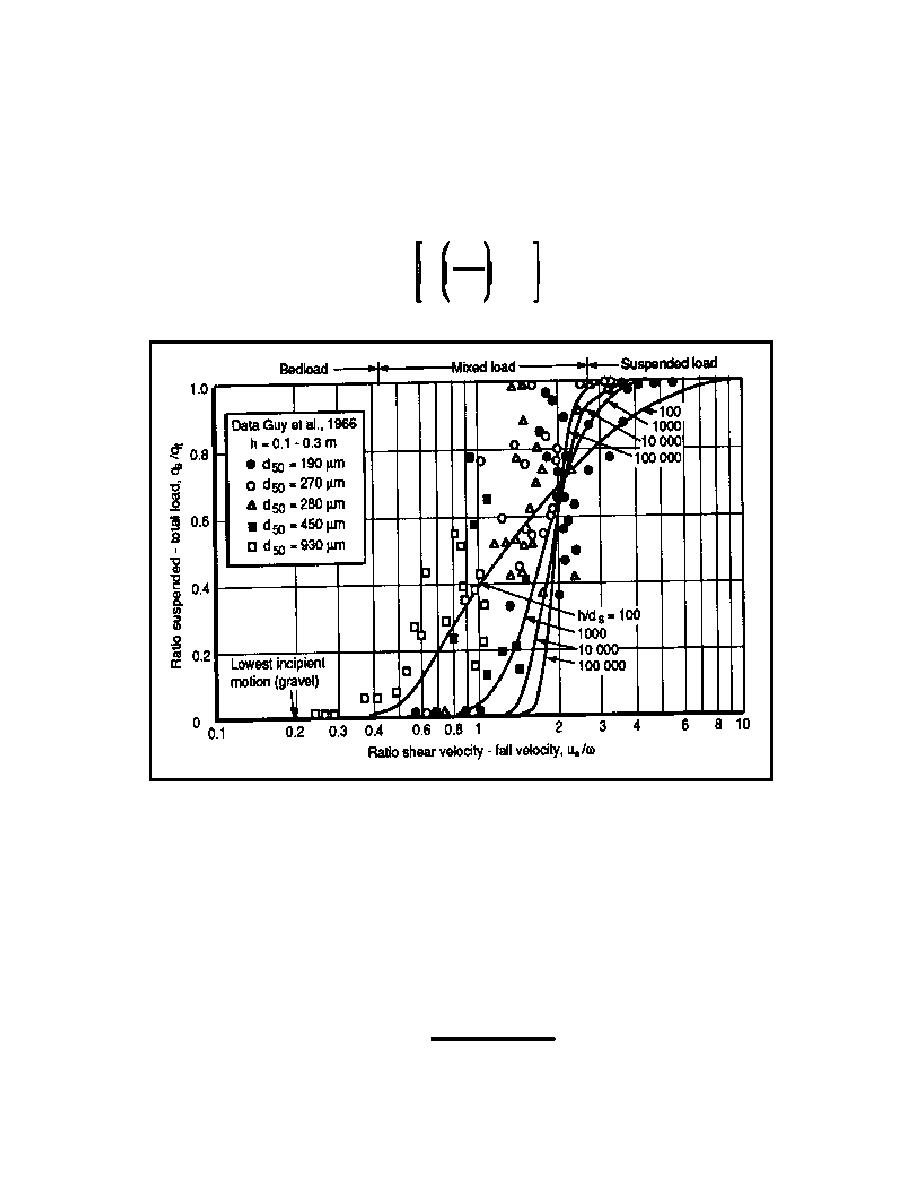
Fundamentals of Engineering Design
equation. The equation was intended for used in the arid environment of Pima County, Arizona. Due to
the infrequent opportunities to measure sediment transport rates under flood conditions, the equation was
theoretically derived. Meyer-Peter and Mller's equation was used for the bedload portion of the sediment
transport. For the suspended portion, Einstein's method of integrating suspended load was used.
Einstein's suspended load equation is written as:
30h
qs ' q b @ I1ln
% I2
(5.33)
Ds
Figure 5.46
Ratio of Suspended to Total Load Versus Ratio of Shear to Fall Velocities
(from Julien, 1995)
where qb is the sediment transported in the bed layer with a thickness of a = 2Ds. The terms I1 and I2 are
the Einstein integrals. Calculation of the integrals is a cumbersome task that can be performed numerically
or with the use of nomographs prepared by Einstein (1950). The bedload and suspended load were
calculated and combined under a variety of conditions. The range of particle size was 0.5 to 10 mm and
the bed slope ranged from 0.001 to 0.04. The data were then used to calibrate a simplified equation for
total load sediment transport. The equation, as presented in Zeller and Fullerton (1983), is:
n 1.77V 4.32Gr 0.45
qtv ' 0.0064 @
(5.34)
0.30 0.61
d
D50
185



 Previous Page
Previous Page
